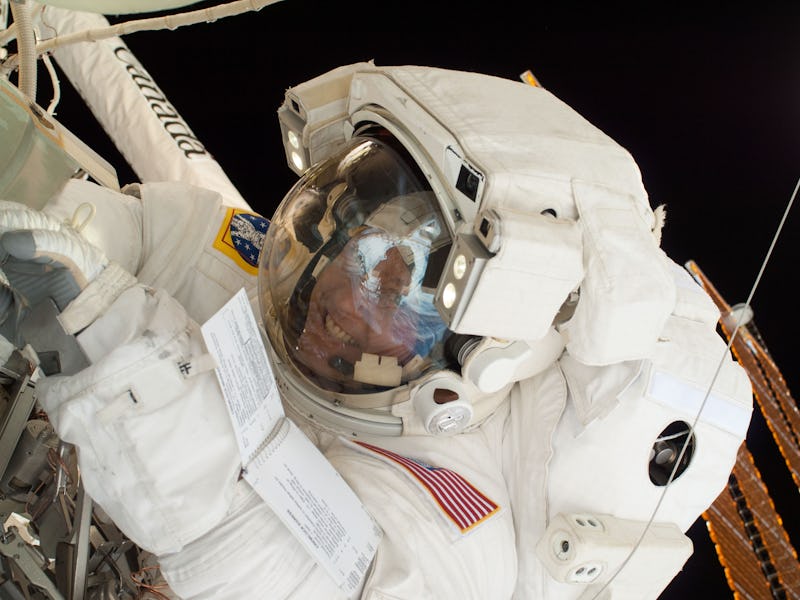NASA just took another step in getting more private citizens to space
The agency has put out a request for mission proposals to send people to the International Space Station.

Want to go to space? Thanks to NASA’s big push to get more private citizens onto launches, it could happen sooner than expected.
On Friday, the agency announced that it’s taking proposals for two more private astronaut missions to the International Space Station, with the option to stay for up to 14 days. The first mission would take place sometime between fall 2022 and mid-2023, while the second would be mid-to-end 2023. The proposals are due on July 9 at 5 p.m. Eastern time.
Want to find out more about the emergent new space race, and competitors like SpaceX and Blue Origin? Subscribe to MUSK READS+ for exclusive interviews and analysis about spaceflight, electric cars, and more.
The missions are part of NASA’s long-term goals to increase commercial activity in orbit. The agency aims to host up to two private astronaut missions to the International Space Station per year.
It forms part of an overall trend of private companies working to send civilians into space. Companies like SpaceX, Blue Origin, and Virgin Galactic have outlined plans to sell tickets on their rockets.
In 2011, after the space shuttle program ended, NASA invited private companies to develop a successor system that could transport astronauts to the space station. The first successful system to emerge was SpaceX’s Crew Dragon capsule and Falcon 9 rocket, which has launched three crewed missions since the first in May 2020.
NASA private missions: what is planned for SpaceX’s capsule?
While all three of SpaceX’s crewed missions sent up NASA astronauts, SpaceX also plans to use the system to support a series of private missions:
- The Inspiration4 mission, set for September 15, 2020, could be the first all-civilian flight to orbit.
- Axiom Space’s Ax-1 mission, no earlier than January 2022, will send four citizens to the space station for eight days.
- Axiom Space’s Ax-2 mission, expected in fall 2022, could include a winner from the upcoming reality TV show Who Wants to be an Astronaut?
- The firm is also hosting an Ax-3 mission, potentially in early 2023.
- Axiom Space’s Ax-4 mission in late 2023 could launch a winner from the upcoming reality TV show Space Hero.
While Axiom Space has reached an agreement with SpaceX and NASA to support the Ax-1 mission in January 2022, the firm has only reached an agreement with SpaceX for the latter three missions. It has yet to reach an agreement with NASA for Ax-2 and subsequent missions.
SpaceX’s Crew Dragon capsule is used for transporting NASA astronauts to and from the International Space Station.
Note that SpaceX’s missions will soar far higher than Blue Origin and Virgin Galactic. The latter two are aiming for suborbital missions with a few minutes of weightlessness. Blue Origin founder Jeff Bezos and Virgin Galactic founder Richard Branson are both expected to fly in their respective firms’ machines next month.
“As more people fly to space and do more things during their spaceflights, it attracts even more people to do more activities in low-Earth orbit, and reflects the growing market we envisioned when we began the Commercial Crew Program 10 years ago,” Phil McAlister, director of commercial spaceflight development at NASA’s headquarters, said in a statement.
NASA private missions: what does Axiom Space aim to do?
Axiom Space’s long-term goal is to build out its own habitat, attached to the International Space Station. This would serve as the starting point for a new, private space station that would survive long after the ISS has been decommissioned.
“We're talking about building a thriving home in space that benefits every human everywhere,” Christian Maender, director of in-space manufacturing and research at Axiom Space, told Inverse in February 2021.
SUBSCRIBE TO MUSK READS+, A PREMIUM NEWSLETTER THAT COVERS THE WORLDS OF ELON MUSK, SPACEX, TESLA, AND EVERYTHING BETWEEN.